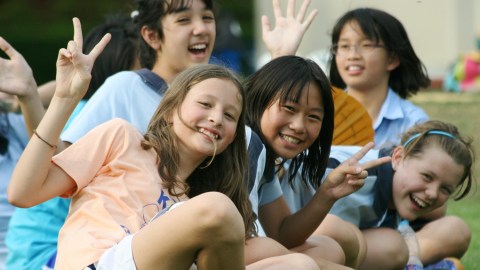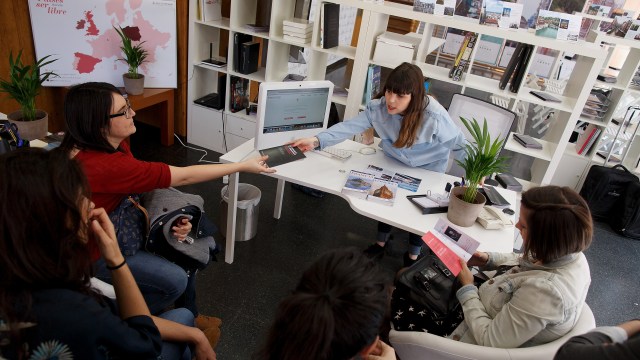Study finds Montessori education obliterates the difference between high- and low-income kids

Researchers and educators have identified early childhood as one of the most important developmental periods in a person’s life, setting in place patterns that can predict life outcomes. This is not surprising given the fact that the human brain goes through profound changes in the first six years, most of which appear to be permanent.
In addition, economic analyses have shown that educational interventions aimed at preschool programs have the highest return on investment. Yet, there is little consensus on what kinds of programs should be widely implemented and have the most positive effects.
A new longitudinal study from the University of Virginia has been published in the journal Frontiers in Psychology comparing the Montessori educational method to regular preschool education. The results show marked differences between the two approaches, with the Montessori education leading to better performance on several measures and, importantly, to more equalized outcomes between groups of children coming from different socioeconomic backgrounds.
The Montessori method was developed by Dr. Maria Montessori in the first half of the 20th century and stemmed from Montessori’s observations on how children developped in their natural environment. Central to the method is creating an environment with specialized educational materials in which the child learns through discovery rather than direct instruction and is free to make constructive choices.
Some major differences from regular schooling methods are lack of exams and grades as well as a multi-age classroom in which children can choose whether to work alone or with peers. Sergei Brin, Larry Page, Jeff Bezos, and Jimmy Wales have all attended Montessori schools, which are thought to be better at developing creativity.
The newly published study is one of few on the Montessori method that has overcome study limitations, such as good controls, sample sizes and program quality. It lasted for three years, and included a total of 141 children (starting at age 3) who were randomly assigned via a school lottery to a Montessori (70) or another preschool (71).
The children were tested four times over the three-year period on several cognitive and socio-emotional measures: academic achievement, theory of mind and social skills, executive function, mastery orientation, relative enjoyment of school, and creativity.
This is also the first study to examine the potential of Montessori education to close the income achievement gap, which is the difference between children’s academic outcomes predicted by their family’s income level. This difference is noticeable from preschool and persists throughout the entire schooling experience.
Although there were no differences between the two groups at the first test point, by the end of the third year Montessori children fared significantly better on measures of academic achievement and social cognition, were more likely to have a growth mindset (a belief that intelligence is not fixed and one can master new challenges by putting effort into developing new abilities) and had a relatively more positive attitude towards school activities. There were no significant differences between the two groups on measures of creativity or executive function.

Academic achievement across preschool by school type. The figure shows significantly greater growth in academic achievement across preschool for children enrolled in Montessori preschool (dashed blue lines, n = 70) than waitlisted controls (dotted black lines, n = 71) / Credit: Frontiers in Psychology
The Montessori group also made substantial headway in closing the income achievement gap. While at the beginning of the study, kids from low-income families were performing significantly worse than those from high-income families, after three years of attending a Montessori preschool this difference had statistically disappeared. In comparison, the achievement gap was preserved in the control group.

Academic achievement across four time points by school condition and income group. Although equal to the lower income control children at Time 1, by Time 4 the lower income children in Montessori showed a strong positive trajectory towards closing the achievement gap with the higher income children in control and Montessori schools. / Credit: Frontiers in Pscyhology
The researchers point out that further studies are needed to determine the exact causes of the different outcomes of the two groups. Montessori schools and regular schools vary in many dimensions. For example, teacher training may be a significant factor, or the quality of educational materials. In addition, the program quality between different Montessori schools can vary significantly.
Angeline Lillard, a psychology professor and one of the authors of the study commented on the importance of the findings:
We have persistently failed to figure out a way to help people who are born into poverty more reliably get out of that situation. Education is widely heralded as the best possible way, and yet our conventional school systems don’t seem to be a lot of help. You see the cycle of poverty over and over again. People who are born into it, stay in it; if we could find a different way to school children that could make a difference, we might be able to make some headway on this age-old problem.





